Madness in Art: A Powerful Connection
Madness and art have long shared a profound and powerful connection, where the boundaries between genius and instability often blur. Many acclaimed...
Maya M. Tola 28 October 2024
The May Queen is the personification of springtime. Crowned with fresh flowers, she leads her people to the Maypole for fun and frolicking. A maiden represents the fruitful bounty of the coming year, at the moment that Spring bursts out in all her glory. People gathered boughs of Spring flowers, such as Hawthorn, visiting their neighbors and asking for blessings for the coming year. Follow the May Queen in art.
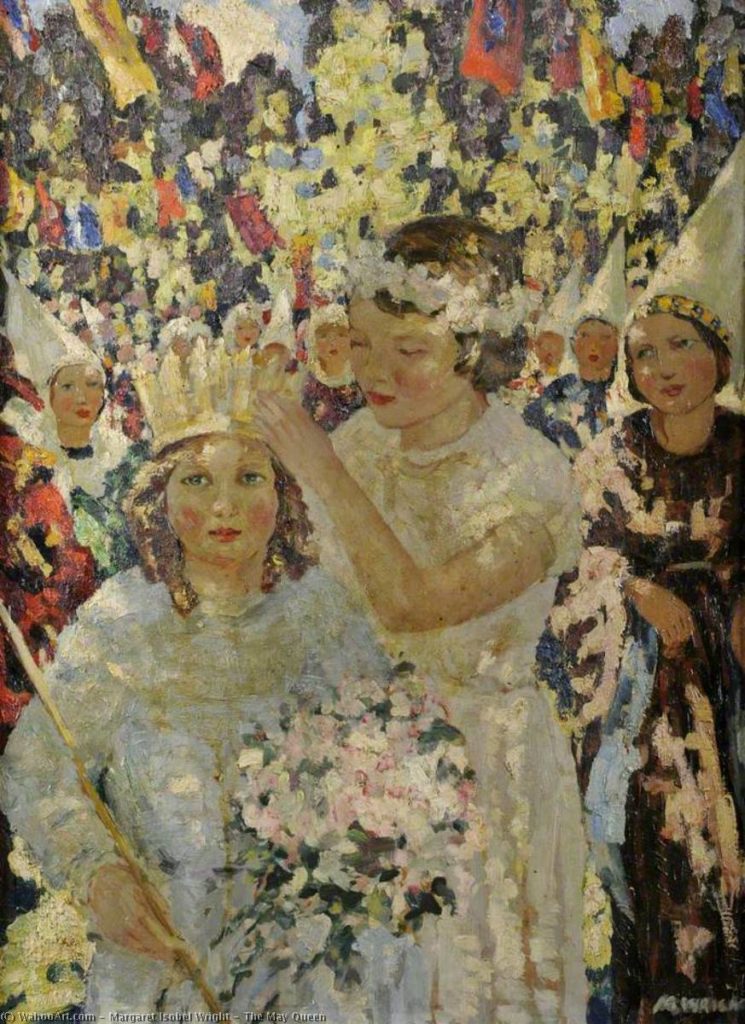
Although some argue that the May Queen is a modern invention, its roots lie in our pagan past and the traditions of Beltane. Certainly, the huge popularity of the Tennyson’s poem The May Queen helped to fuel interest in this celebration in the 19th Century. However, other May Queen-style icons include Lady Marian from the Robin Hood tales and Guinevere from the Arthurian legends. The Brothers Grimm have also made reference to May Queen customs in Europe and their connection to a celebration of fertility and bounty. Also, Pieter Brueghel was painting May Day festivities long before Alfred Lord Tennyson was around!
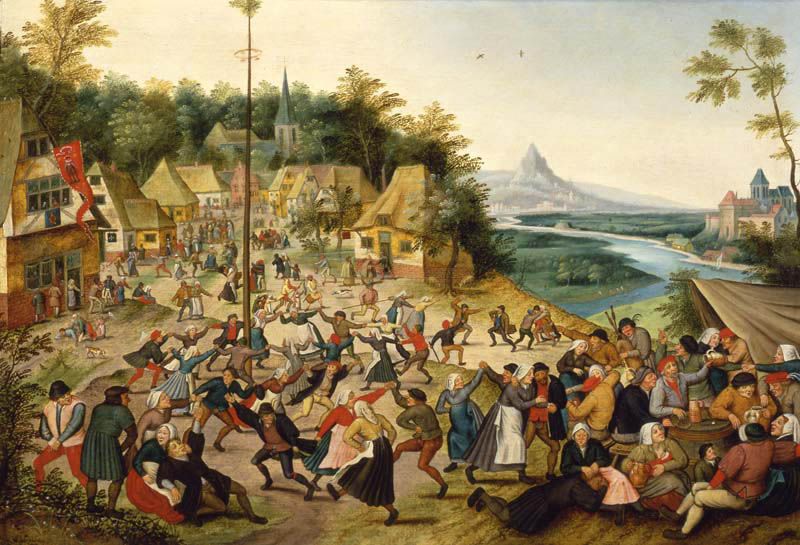
Films such as The Wicker Man and Swedish Midsommar tried to make a connection between lusty pagan celebrations and human sacrifice. In reality, there is no evidence to support this. Celebrations could get lively though. If you look closely at the Pieter Breugel painting above, you may spy a person peeing into the bushes, and someone else being sick after a little too much beer! William Collins, famous for his sentimental paintings of the English working classes, also shows a community keen to pack in fun, games, and alcohol on a work-free day.
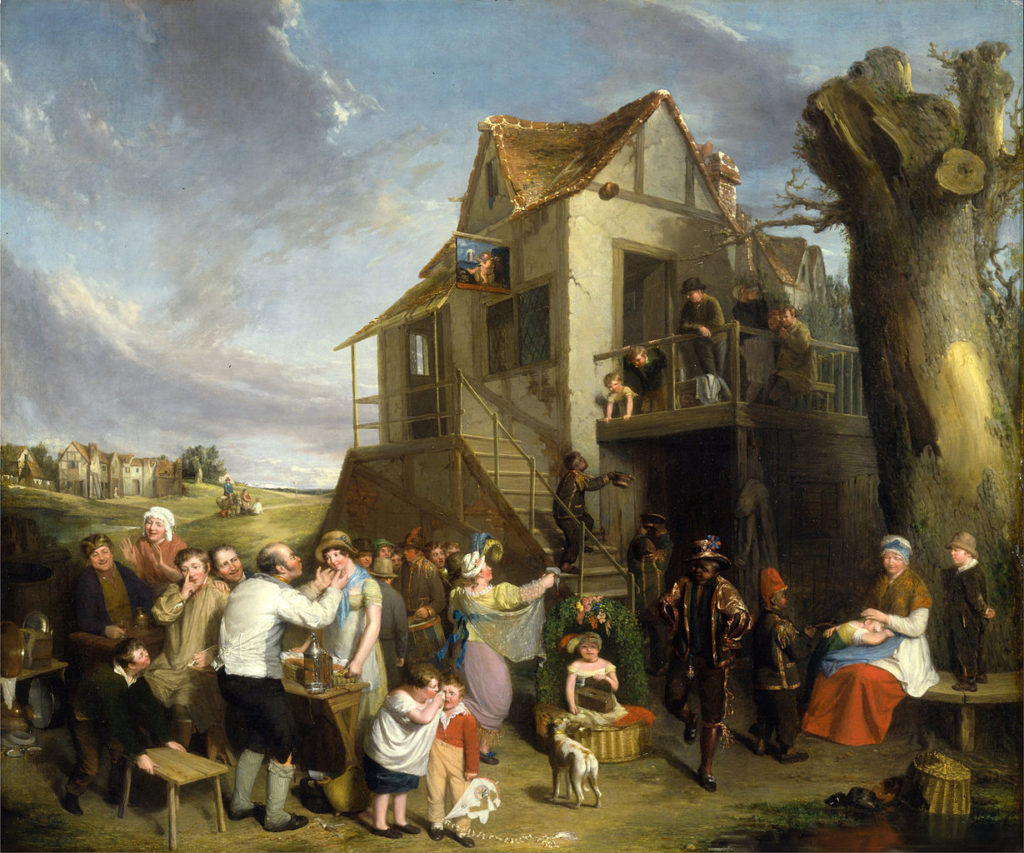
However, much of the art of May Day celebrates the innocence and freshness of Spring. English painter Herbert Wilson Foster was known for his rural village scenes, and although this image could easily grace a chocolate box rather than a gallery wall, it really is rather pretty.
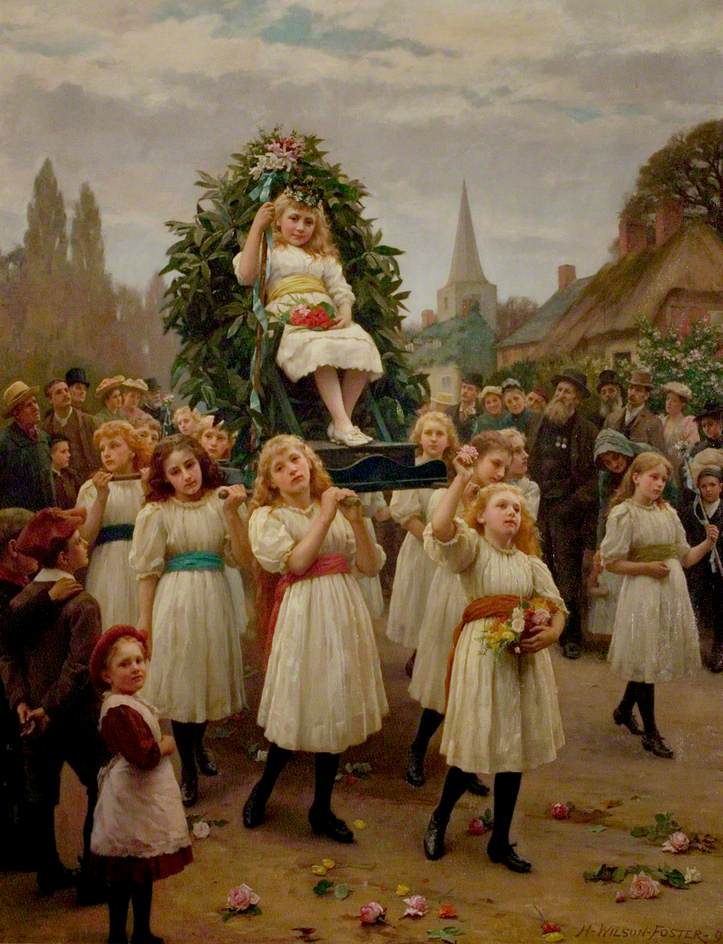
The Catholic Church seems to have overlapped veneration of the Virgin Mary with this long-standing pagan celebration. The whole month of May is devoted to the Holy Mother. In churches across the globe, the high point is the ‘Crowning of Mary’ ceremony, where children place a flower crown on a statue of Mary, and recite or sing a litany prayer, praising her.
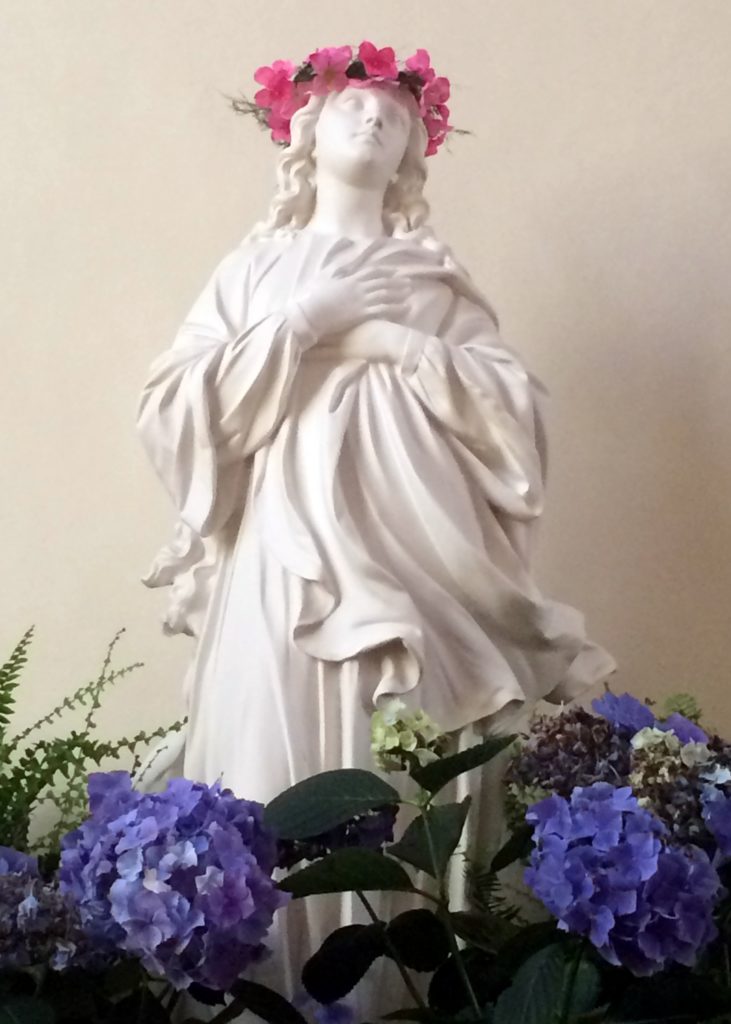
John Ruskin, a giant of the Victorian literary and arts scenes, was a particular fan of the May Queen phenomenon. He even initiated a tradition of crownings at Whitelands College, London. Ruskin’s clumsy and rather mawkish instruction to the students was that their chosen May Queen should be “the lovablest and likeablest” woman in the college. Outfits and ceremonies became ever more extravagant and theatrical, with processions, chapel ceremonies, and hundreds of participants.
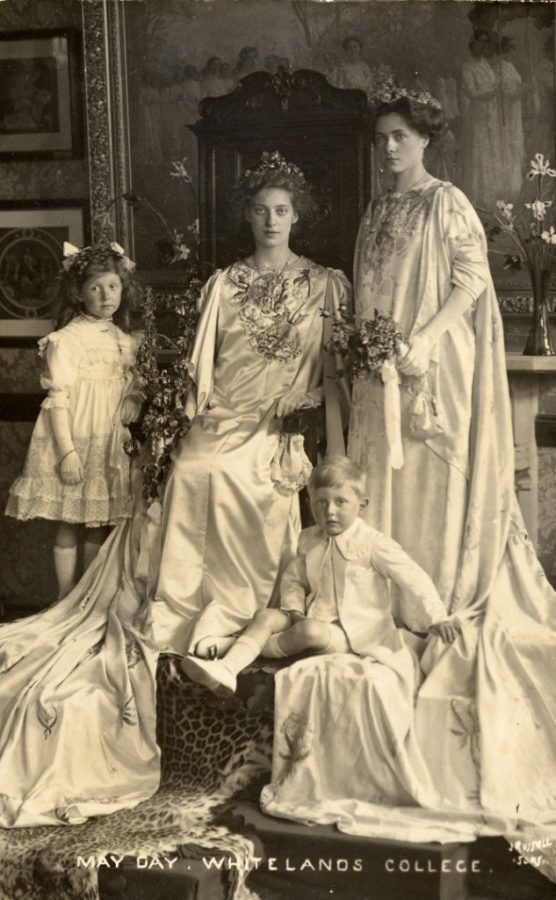
The joy and freshness of a May celebration have certainly inspired artists for centuries. We may not be able to party with our communities right now, but however you celebrate the coming of Spring, we wish you joy and love.
DailyArt Magazine needs your support. Every contribution, however big or small, is very valuable for our future. Thanks to it, we will be able to sustain and grow the Magazine. Thank you for your help!